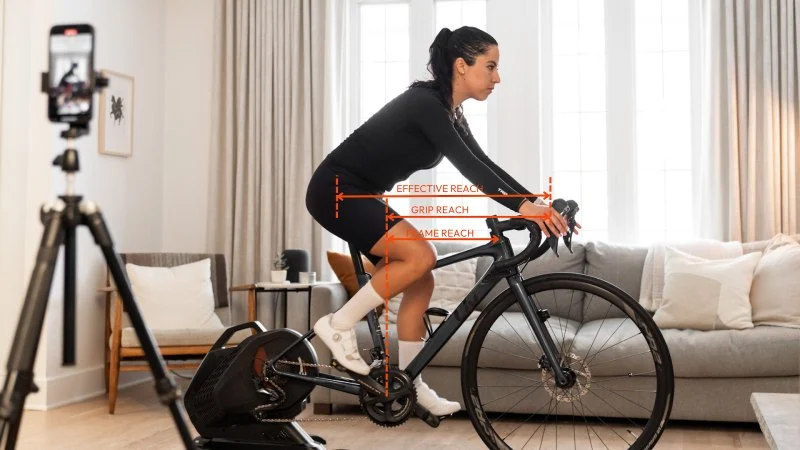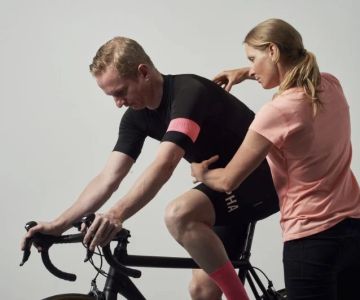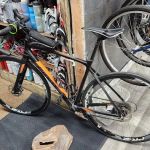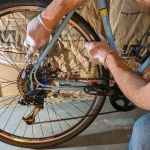
Understanding Bike Fit: How Frame Size, Saddle Height, and Reach Matter
php-templateCopy code- 1. Why Bike Fit is Crucial for Comfort and Performance
- 2. The Importance of Frame Size in Bike Fit
- 3. How Saddle Height Affects Your Ride
- 4. Reach and Handlebar Position: Finding the Right Balance
- 5. Common Bike Fit Mistakes and How to Avoid Them
- 6. How to Adjust Your Bike Fit for Different Riding Styles
- 7. Conclusion: Achieving the Perfect Fit for Your Cycling Needs
1. Why Bike Fit is Crucial for Comfort and Performance
When it comes to cycling, proper bike fit isn’t just about comfort—it's also essential for improving performance, preventing injuries, and ensuring an enjoyable ride. A bike that is correctly fitted to your body can make a world of difference, from reducing discomfort and muscle strain to enhancing your speed and endurance. Whether you’re a competitive racer or a casual rider, understanding how factors like frame size, saddle height, and reach influence your bike fit can help you ride with greater efficiency and comfort.
2. The Importance of Frame Size in Bike Fit
The first and most critical factor in bike fit is the frame size. Frame size determines the overall geometry of the bike, including the length of the top tube, seat tube, and the angle of the head tube. A bike frame that is too large or too small for your body can cause discomfort, poor handling, and increased risk of injury. Correctly sizing the frame ensures that you can maintain a proper riding posture, with your knees and hips in the right alignment.
How to Choose the Right Frame Size
The right frame size depends on your height and inseam measurement. Most bike manufacturers provide size charts that correlate these measurements with their frame sizes. However, it’s important to note that different brands may have slight variations in their sizing. If possible, test ride bikes to ensure the frame size feels comfortable and allows you to stretch out your legs and reach the handlebars without straining.
Common Frame Size Issues
Riding a bike with the wrong frame size can lead to various problems. A frame that is too small might make you feel cramped and cause knee pain, while a frame that is too large can make the bike harder to control. A well-fitted frame provides stability and allows you to ride for longer distances without fatigue.
3. How Saddle Height Affects Your Ride
Saddle height is another crucial element in bike fit. If the saddle is too low or too high, it can lead to discomfort, muscle strain, and inefficiency. The right saddle height allows for a smooth pedaling motion and proper knee alignment. To adjust the saddle height, ensure that when the pedal is at the bottom of the stroke, your knee is slightly bent. This will help maximize pedaling efficiency and reduce the risk of injury.
How to Adjust Saddle Height
To determine the proper saddle height, start by sitting on your bike with your feet on the pedals. With the pedal in the 6 o’clock position, your leg should be almost fully extended, with just a slight bend in your knee. If your knee is too straight or too bent, adjust the saddle height accordingly. When in doubt, a professional bike fitting session can help you get the precise measurements.
Common Saddle Height Problems
If your saddle is too low, it can cause you to pedal inefficiently and put extra strain on your thighs. On the other hand, if your saddle is too high, you may experience lower back pain, and you might not be able to fully extend your legs during the pedal stroke. Adjusting the saddle height ensures you achieve optimal pedaling mechanics and comfort.
4. Reach and Handlebar Position: Finding the Right Balance
Reach, or the distance between the saddle and the handlebars, plays a significant role in your overall riding posture. An improper reach can lead to discomfort in your back, shoulders, and arms. Finding the right reach involves adjusting the stem length, handlebar height, and the angle at which the handlebars are positioned. This ensures that your arms and upper body are in a relaxed position, reducing strain and allowing you to maintain a more aerodynamic posture without feeling cramped.
Adjusting Reach for Comfort and Performance
If your handlebars are too far away, you’ll have to stretch uncomfortably, leading to back and neck pain. Conversely, handlebars that are too close can cause discomfort in your elbows and wrists, leading to poor bike handling. Adjusting the stem length and handlebar position can help you find the optimal reach, allowing for a natural and comfortable riding posture.
Handlebar Height
Handlebar height also affects your riding position. Lower handlebars are more aerodynamic, making them ideal for competitive cyclists, while higher handlebars offer a more upright and comfortable position for casual riders. Adjusting your handlebars to match your riding style and body type is crucial for comfort and efficiency.
5. Common Bike Fit Mistakes and How to Avoid Them
Many riders overlook the importance of proper bike fit, leading to discomfort and injury. Here are some common bike fit mistakes and how to avoid them:
1. Ignoring Saddle Position
Many riders focus on saddle height but neglect the saddle's horizontal position. The saddle should be positioned so that when you pedal, your knee is aligned over the pedal axle. A misaligned saddle can cause discomfort and inefficient pedaling.
2. Choosing the Wrong Pedal Position
Pedal positioning affects your overall comfort and pedaling efficiency. Incorrect pedal position can lead to knee pain and muscle strain. Make sure your pedals are correctly aligned and suited for your riding style.
3. Not Testing the Bike Fit
Even with all the right measurements, it's essential to test ride the bike. Adjusting the frame, saddle, and handlebars during a test ride allows you to make necessary tweaks for ultimate comfort. A professional bike fitting can also ensure that your bike fits perfectly to your body type and riding goals.
6. How to Adjust Your Bike Fit for Different Riding Styles
Your bike fit should vary depending on the type of cycling you plan to do. Here’s how to tailor your bike fit for different riding styles:
1. Road Cycling
For road cycling, the focus is on aerodynamics and speed. A lower handlebar position and a more aggressive riding posture will help you achieve higher speeds. Your saddle should be slightly higher than the handlebars, allowing for efficient pedaling and reduced wind resistance.
2. Mountain Biking
Mountain biking requires a more upright riding position to help with bike control on rough terrain. A higher handlebar position and a more relaxed saddle height will give you better stability and comfort during rides on trails.
3. Commuting
If you're using your bike for commuting, comfort and an upright riding posture are key. A higher handlebar and a more comfortable saddle position will help you maintain a relaxed position for longer periods, reducing strain on your back and neck.
7. Conclusion: Achieving the Perfect Fit for Your Cycling Needs
Finding the right bike fit is crucial for both comfort and performance. By understanding how frame size, saddle height, and reach affect your riding position, you can optimize your fit for a more comfortable and efficient ride. Whether you're a competitive cyclist or a casual rider, making the necessary adjustments can help prevent injury, improve your riding experience, and enhance overall performance. For more expert advice and products to help you find the perfect bike fit, visit Cycling Guider for personalized recommendations and the best cycling gear.







 OC Cyclery - Buy Sell Trade - Specialized Bicycles4.0 (92 reviews)
OC Cyclery - Buy Sell Trade - Specialized Bicycles4.0 (92 reviews) Tampa Bay eBikes4.0 (64 reviews)
Tampa Bay eBikes4.0 (64 reviews) Budget Bicycle Center4.0 (289 reviews)
Budget Bicycle Center4.0 (289 reviews) Jeff's Bicycle Repair & Sales4.0 (65 reviews)
Jeff's Bicycle Repair & Sales4.0 (65 reviews) Arlington Velo Sport4.0 (435 reviews)
Arlington Velo Sport4.0 (435 reviews) Elliptigo Hudson Valley3.0 (2 reviews)
Elliptigo Hudson Valley3.0 (2 reviews) How to Teach Kids to Ride a Bike: A Step-by-Step Guide for Parents
How to Teach Kids to Ride a Bike: A Step-by-Step Guide for Parents Tips for Riding on Busy City Streets: Smart Strategies for Urban Cyclists
Tips for Riding on Busy City Streets: Smart Strategies for Urban Cyclists Best US National Parks for Mountain Biking: Ride Epic Trails Across America
Best US National Parks for Mountain Biking: Ride Epic Trails Across America Best Aero Helmets for Time Trials and Racing
Best Aero Helmets for Time Trials and Racing How to Clean and Lubricate Your Bike Chain Like a Pro
How to Clean and Lubricate Your Bike Chain Like a Pro 10 Must-Have Items for Long-Distance Cycling Trips
10 Must-Have Items for Long-Distance Cycling Trips